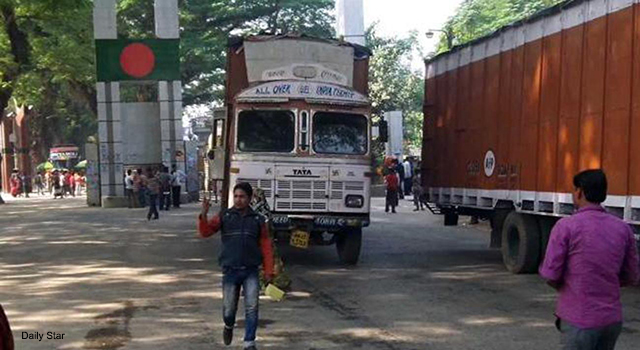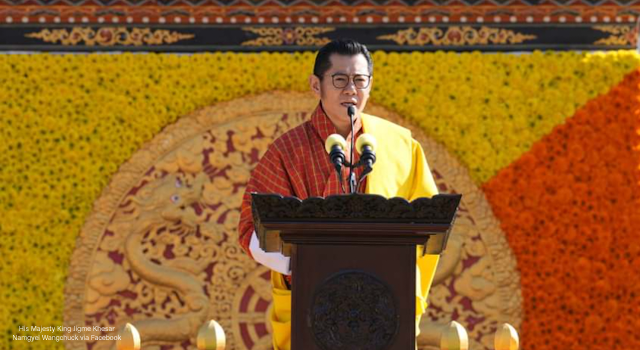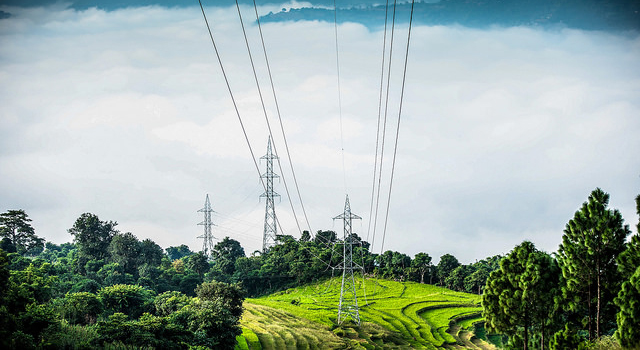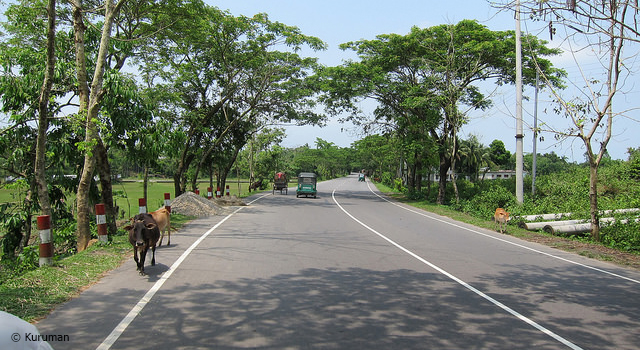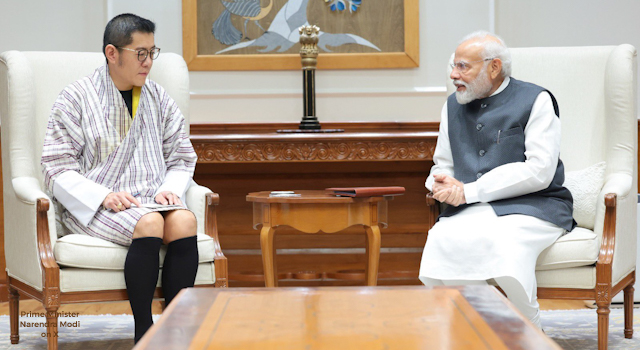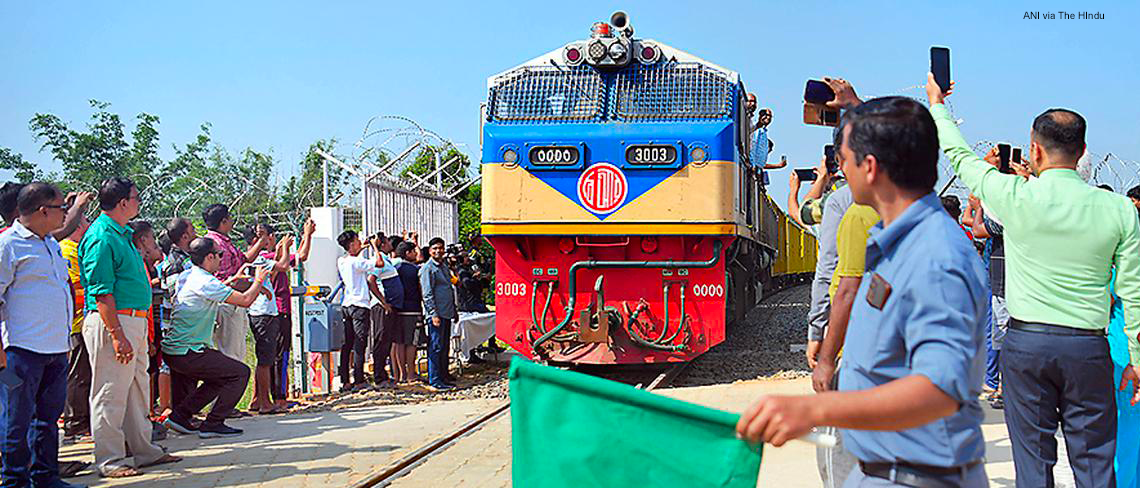
Commentary: India's Integrated Check Posts Are Boosting Regional Connectivity But Challenges Remain
29 July 2021
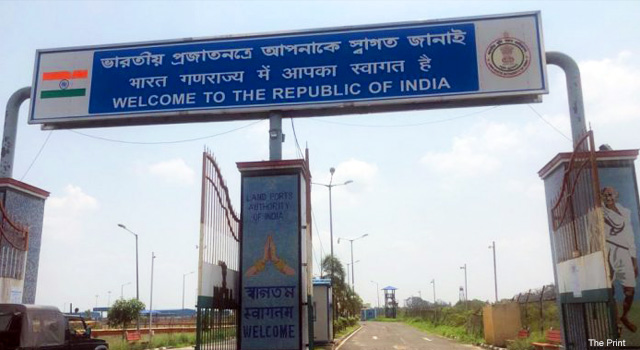
Ms. Riya Sinha, researcher for Research Associate at the Centre for Social and Economic Progress, New Delhi, looks at the increasing trade and passenger movement between India and neighbors Nepal, Pakistan, and Bangladesh, and examines Delhi's push for border infrastructure development. This is an excerpt from a piece that appears on The Print.
India's Integrated Check Posts Are Boosting Regional Connectivity but Challenges Remain
Efficient connectivity infrastructure is a prerequisite for regional economic integration. A 2018 World Bank study led by Sanjay Kathuria posits that trade between South Asian countries could be close to $67 billion, three times more than the actual figure of $23 billion. Various structural impediments and tariff and nontariff barriers have limited the trade potential in the region, and in turn, affected regional integration.
Following economic liberalization in the 20th century, countries in South Asia have prioritized trade with distant European and Southeast Asian countries but have effectively maintained a closed border within the neighborhood. For instance, it takes approximately two days for a container to be shipped from Kolkata port to Singapore (approximately 3,700 km), whereas it takes about the same amount of time for a truck at Petrapole Integrated Check Post (ICP) in West Bengal to cross the land border into neighboring Bangladesh. Until the early 1960s, India, Nepal, and formerly East Pakistan (Bangladesh) were well connected through the waterways of Ganga and Brahmaputra rivers, and a large number of active rail services. Regional air connectivity in South Asia has also decreased significantly, with no flights between Nepal and Pakistan, or between smaller cities such as Port Blair (India) and Yangon (Myanmar).
As a result of this poor state of connectivity, which affected the region for decades, little attention had been given to improvements in border management infrastructure until the 1990s.
The development of the ICPs in India and its immediate neighbors is one of the key focus areas to improve connectivity. The ICPs in northeast India are also important for the nation's Act East policy, which is an extension of its 1991 Look East policy, and is focused on integrating the Indian economy with the supply chains of Southeast Asia (MEA, 2021). Both policies have also led to the setting up of mechanisms for monitoring infrastructure projects with neighboring countries. For instance, after Prime Minister Narendra Modi's visit to Nepal in 2016, a Nepal-India Oversight Mechanism was put in place to oversee the implementation of bilateral projects.
Integrated Check Posts: Their Roles
Since 2012, India has inaugurated seven ICPs at Attari, Kartarpur, Agartala, Petrapole, Raxaul, Jogbani, and Moreh. Out of these, Kartarpur is currently limited to passenger movement. India has also been constructing ICPs at Rupaidiha (Uttar Pradesh), Dawki (Meghalaya) and Sabroom (Tripura).
The ICPs are central to India's connectivity plans in the region. They not only consist of border infrastructure for facilitation of trade and people, but also act as important centers to advance other multimodal intra- and interregional connectivity initiatives, such as improving rail connectivity; implementing the Bangladesh–Bhutan–India–Nepal Motor Vehicles Agreement (BBIN-MVA); the use of Chattogram and Mongla ports in Bangladesh to transport cargo to India's northeast region; and the Kaladan Multi-modal Transit Transport Project to connect Southeast Asia to South Asia, among others.
Land-border Crossings
Land-border crossings between India and its neighboring countries are under two categories—land custom stations (LCSs) and immigration check posts (ImCPs). The ICPs consolidate both facilities within a single facilitation zone.
All LCSs fall under the Central Board of Indirect Taxes and Customs. The LCSs are border crossings where trade in goods occurs between India and its neighbors.
The ImCPs are nodal points for facilitation of passenger movement across India's land, sea, and air borders. India has 86 ImCPs, of which 37 are operated by the Bureau of Immigration under the Ministry of Home Affairs. The rest are operated by state governments.
Integrated Check Posts
The Land Ports Authority of India (LPAI) is the nodal agency for construction, operation, and management of the ICPs. A customs station at an ICP performs the same functions as it does at an LCS, albeit with better infrastructure. At each ICP, the LPAI provides facilities such as a passenger terminal building, currency exchange, a building to process cargo, cargo inspection sheds, warehouse/cold storage facilities, a quarantine laboratory, banks, and scanners.
Compared to seaports and airports, the ICPs are relatively smaller ports built at a cost up to INR200 crore (approximately $ 29 million). In June 2006, at an interministerial meeting on the volume of trade, the Additional Secretary (Commerce) had identified 13 LCSs to be upgraded to ICPs. Of these, six have been completed and inaugurated.
In 2018–2019, the government decided to do away with the development in phases of ICPs and instead prioritized development based on freight and passenger volume. According to an official at the LPAI, the goal is to have 23 ICPs on India's land borders by 2025.
Given that less than 2% of India's global trade takes place through the ICPs (thereby generating lesser revenue), limited emphasis has been laid on its expansion and further development until recently. In comparison, 70% of India's trade-by value and 90%-by volume, takes place through seaports built over much larger areas than the ICPs. Trade of mostly high-value-low-volume commodities, such as gold, passes through airports. Compared to India's global trade, India's trade with neighboring countries is in low-value goods.
The Future Role of ICPs in South Asia
This infrastructure development along India's land borders begs two key questions: (i) are ICPs really facilitating freight and passenger movement between India and its neighbors? and (ii) with various regional connectivity infrastructure projects in the pipeline, what role will the ICPs play?
First, an empirical analysis of the various operational ICPs in the region shows an increase in trade and movement of people after the operationalization of the ICPs. For instance, India's exports to Nepal increased by 75% post-initiation of ICP Raxaul in 2016; the share of ICP Attari in India's total trade with Pakistan increased from 17% in 2011–2012 to 33% in 2013–2014, signifying rerouting of trade from sea; and the passenger movement through ICP Moreh increased by approximately 530% in 2018–2019.
Most of the current operational ICPs, including Raxaul and Petrapole, are operating at over 100% capacity. Any further increase in volume leads to congestion on the approach roads and within the ICPs. The volume of freight and passenger traffic is soon likely to increase with various connectivity infrastructure initiatives linked to the ICPs coming to fruition. Therefore, it is important that a preemptive growth estimation be done for traffic through the ICPs, so that adequate facilities can be provided for different types of cargo while maintaining the export clearance time as 24 hours.
Second, as part of India's Act East and Neighbourhood First policies, several regional connectivity initiatives have been taken in South Asia that warrant a reassessment of the role that ICPs would play in trade facilitation and movement of people. These regional connectivity initiatives will increase the mandate of the ICPs.
With Bangladesh, four rail lines are now operational. The 12-km-long Agartala–Akhaura railway link is under execution; this route is expected to cut travel time between Tripura and Kolkata via Dhaka and facilitate freight movement from India's northeastern states to Kolkata. Inland waterways is another mode that has seen development in recent years. In September 2020, during the pilot test of the Chittagong–Tripura inland waterway route, 50 MT of cement were transported on river Gumti from Daudkandi (Bangladesh) to Sonamura (India) via a 90-km waterway.
More Work Remains to Be Done
According to a former MEA official, the planning for key projects such as roads and ICPs is done on a "past-experience" basis and not a "forward-looking" approach. For instance, he notes that roads are built based on the current traffic volume and not on future projections; and consultants and planners work on old statistics. Given the huge potential of these routes in facilitating multimodal transportation, it is important that infrastructure be developed at the ICPs keeping future potential in mind, and not on existing trade and transit figures. There is also a need to ensure alignment of the existing border infrastructure, including the ICPs, with the above-mentioned regional connectivity initiatives to accrue maximum benefit for trade facilitation and to ensure the seamless movement of people across subregions. Such developments warrant infrastructure upgradation and investment in technology upgradation in the border areas.
Furthermore, at an interregional level, ICPs are envisaged to connect the transport of Indian goods to the northeast region transiting via Bangladesh, and further link them with supply chains in Southeast Asia. Several other connectivity initiatives are also at various stages of development connecting South Asia with Southeast Asia, such as the India—Myanmar—Thailand (IMT) Trilateral Highway, Asian Highways 1 and 2, the Trans-Asian Railway network, among others. Some of these routes intersect at the ICPs. For instance, the IMT route passes through ICP Moreh. The infrastructure is expected to play a key role in multimodal transportation in the region and pave the way for easing transportation from South Asia to Southeast Asia.
While the need for ICPs arose out of border security concerns, increasing the volume of trade with neighboring countries as well as connectivity through important infrastructure projects should be the driving factor behind selection of the LCSs for upgradation to ICPs. The construction of ICPs has shown significant improvements at certain places, however, not much improvement has taken place at other border points due to lack of a mirror infrastructure in the neighboring countries. For instance, the case of ICP Petrapole shows that the increase in freight traffic has been limited due to various infrastructural deficits, such as the lack of adequate parking and warehousing space at the corresponding land port in Benapole, Bangladesh. Apart from this, several common challenges exist across the ICPs, including harmonization of working hours with neighboring countries, limitations in truck movement, absence of partner government agencies such as plant and animal quarantine, and paucity of warehousing space. These challenges will need to be addressed for further construction of the ICPs, in order to promote seamless regional trade and logistics.



